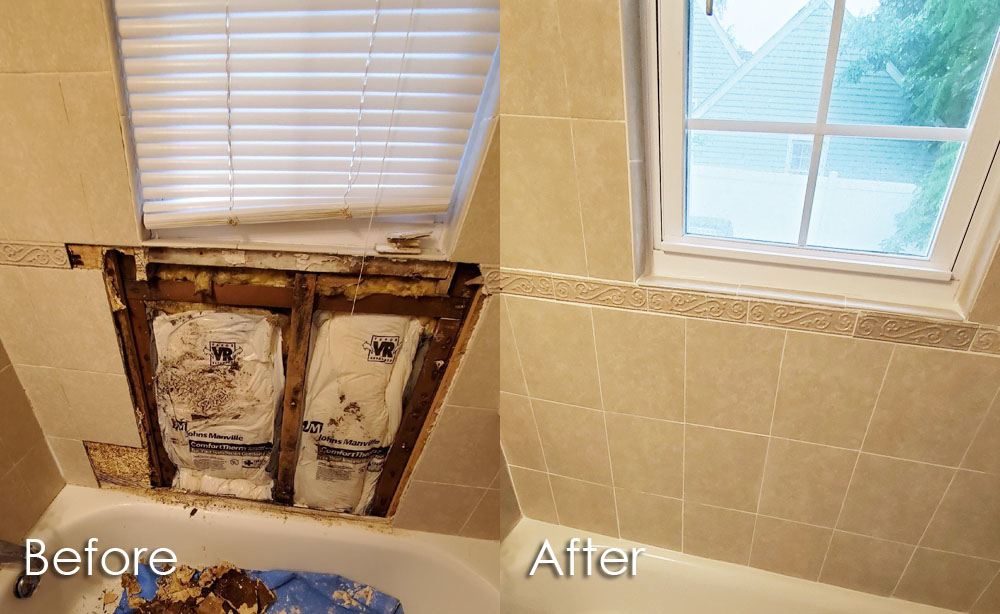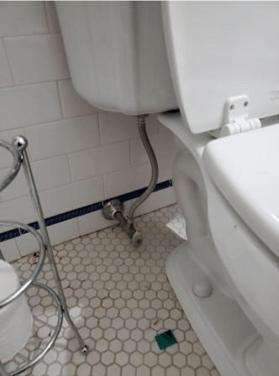Looking for Signs of Water Damage in the Bathroom
Looking for Signs of Water Damage in the Bathroom
Blog Article
We have stumbled upon the article relating to How to Prevent Bathroom Water Damage below on the web and decided it made good sense to relate it with you here.

The washroom is exceptionally at risk for wet accumulation and potential water damage because of the regular use of water in it. This post uses straightforward examination strategies to aid detecting water damage hazards.
The frequent use of water in the restroom makes it very prone for wet buildup and also possible water damages. By evaluating it consistently, you can lower water relevant problems.
The complying with set of evaluations is easy to carry out and ought to be done once in every three months in order to keep your bathroom in good shape and also to stop possible water problems triggered by the tub, the shower, pipe joints as well as plumbing, sinks, cabinets, and the toilet
Do not neglect executing these examinations as well as be extensive while performing them. Remember that these basic assessments can save you a lot of money by providing early signs for water damages
Bath tub and also Shower
The shower as well as bath tub need unique interest as well as maintenance. Check the tiles and also change if split. Ensure that there is no missing grout between the floor tiles. Evaluate and also replace broken caulking at joints where the walls meet the flooring or the bath tub. Blocked drains and pipelines troubles will certainly avoid the tub from drying and also may indicate significant issues beneath the bath tub. Talk to a professional quickly to avoid structural damages. Take note of stainings or soft locations around the bathtub wall surfaces as they may show an interior leakage.
Plumbing
Signs for water damages are hard to find because the majority of pipes are mounted inside the walls.
Pay unique interest to floor covering as well as wall surfaces wetness and also spots as they might suggest an invisible plumbing issue. Check wetness degrees in adjoining areas also.
Sinks and also Cabinets
Sinks and closets are exposed to dampness and moisture day-to-day as well as are usually ignored. Evaluate frequently under the sink and also on the countertop over it. Fix any drip in the catch as it might recommend drain issues. Look around the sink, sluggish draining pipelines may suggest an obstructed drain. Replace sink seals if they are split or loose.
The Bathroom
The commode is a vulnerable water junction. Inspect the water lines and also search for leakages around the commode seat, in the hose, as well as under the water container. If you detect any type of indications of dampness on the floor around the bathroom, look for leakages in the toilet rim and storage tank seals.
Realize that hanging toilet bowl antiperspirants raises the chances for clogs.
Water Damage Signs In The Bathroom To Avoid Cleanup
Musty smell
This is one of the easiest signs to catch because musty smells are so odorous. The damp, earthy, moldy smell should be a big red flag. The smell will develop when moisture gets trapped in surfaces, and begins to facilitate mold growth. Leaking pipes under cabinets, inside walls, and behind shower fixtures will cause moisture to stay trapped and not dry, which will lead to mold growth and spread. As soon as you notice any musty smells in your bathroom, have it checked for hidden water damage and cleanup signs.
Visible mold
If the smell isn’t there to give it away, sometimes you will actually see mold growth. Finding mold in your bathroom is a serious problem, because mold is very harmful to your health. By the time mold growth is visible, it also means that water damage has already occurred and been present for some time. The only way the mold problem can be resolved is to find the source of the moisture and get it stopped. To safely and adequately remove mold, you need to have professionals handle the remediation. Do not waste any time in getting mold problems addressed, fixed, and sanitized so that you can protect you and your family from the many respiratory symptoms caused by mold exposure.
Damaged floors
Bathroom floors should be able to withstand some exposure to water while still remaining in good condition. However, when excess exposure or water leaks occur, they will begin to damage even the most water-resistant flooring. If you notice any cracking, bubbling, staining, or warping on your bathroom floors, there is probably a water leak somewhere causing the distortion. If you notice areas of the floor have become softer, or even have a spongy feeling, there is probably damage to the subfloor. Subflooring is typically made up of plywood. When plywood is exposed to water or moisture, it will absorb it. Once it has become saturated, the weight of the excess water will cause the wood to swell and soften. Check the floors in your bathroom frequently to catch any of these sings before they lead to damaged subflooring.
Changes on walls
When water leaks behind walls, it will cause changes in the drywall. Peeling plaster, blistering paint, and soggy wallpaper are all good indicators that excess water is building up behind the wall. Water leaking behind drywall will cause it to swell and be soft to the tough. If you start to notice gaps along the trim of your walls, or where tile meets the wall, it could also be a strong indicator that there is a leak behind the wall. Any changes, distortion, or damage on the walls should be evaluated as soon as you notice it to prevent further water damage and cleanup.

I have been very focused on How to Fix a Water Damage Bathroom and I'm hoping you enjoyed reading our blog post. Sharing is good. You never know, you may be doing someone a favor. I value reading our article about Preventing Water Damage in the Bathroom.
More Details Report this page